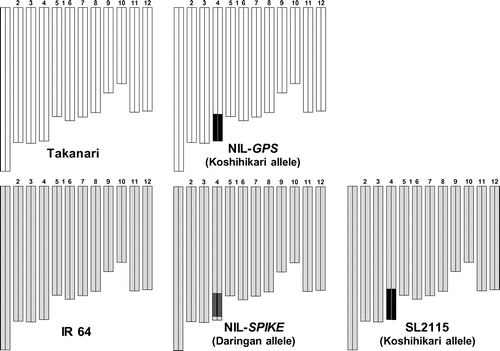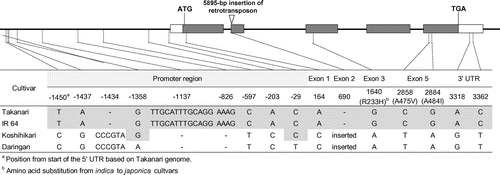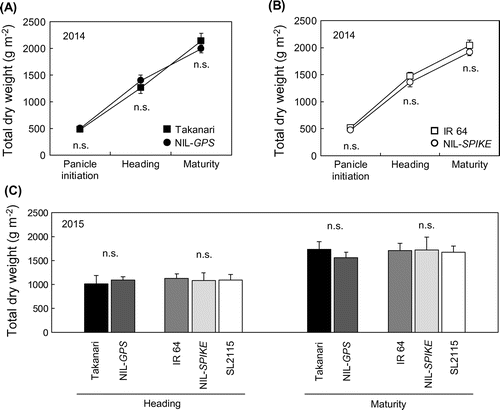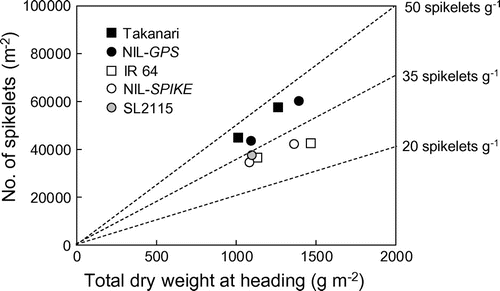Figures & data
Figure 1. Graphical genotypes of Takanari, NIL-GPS, IR 64, NIL-SPIKE, and SL2115. White bars, Takanari; black bars, Koshihikari; light gray bars, IR 64; dark gray bars, Daringan.

Figure 2. Gene structure and mutation sites of NAL1 in Takanari, IR 64, Koshihikari, and Daringan. Gray bars represent exons; white bars represent 5′- and 3′-untranslated regions.

Figure 3. (A) Mean temperature and (B) solar radiation during the rice growth period measured in the experimental field.

Table 1. Days-to-heading and growth duration in five cultivars in 2014 and 2015.
Table 2. Yield and yield components in five cultivars in 2014 and 2015.
Table 3. Correlation coefficient (Pearson’s r) between brown rice yield and the three yield components.
Figure 4. Change of (A, B) leaf area index (LAI) in 2014 and (C–E) chlorophyll content (as the SPAD value) in the topmost fully expanded leaves in (C, D) 2014 and (E) 2015 in five cultivars. *** shows p < .001 by student’s t test between the parent and its NIL in 2014 and in the Takanari background in 2015. Different letter shows p < .05 by Tukey’s test among IR 64, NIL-SPIKE, and SL2115 in 2015. n.s. shows not significant.


